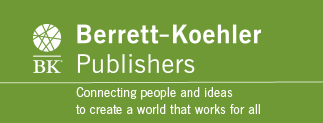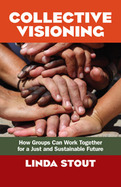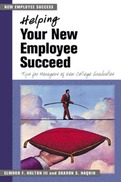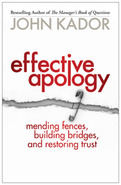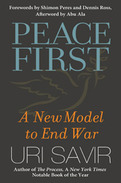2011
-
Shows activists how to develop an inclusive, inspiring vision of the future they want to create
-
Offers a process that guarantees the voices of marginalized people are heard and enables people of all backgrounds to work together with honesty, passion, commitment, and joy
-
Filled with examples and exercises taken from Linda Stout's decades of organizing
All of us want a future that's promising and a way to get there. For decades, activists and community groups have worked to create equitable solutions. Why then are so many of us disappointed at the results?
Despite sincere and well-intentioned efforts, organizers often fall short in creating groups in which people from all backgrounds feel comfortable speaking up. And while progressives are good at articulating what they're against, for a variety of reasons they have a tougher time getting specific about what they're for--creating a positive, energizing vision.
Linda Stout, a lifelong agent of social justice, introduces a process designed to ensure that all voices are heard, an inspiring vision of the future is agreed on, and an action plan is developed that leverages everyone's diverse talents and abilities. Used successfully by over 120 organizations, it creates hope for change among those who've stopped believing change is possible.
Stout lays out the extensive and innovative prework that must be done to build trust and openness before any kind of meeting is held--a distinctive feature of collective visioning. She describes creative approaches for encouraging people to share their histories and most deeply held personal values, and she explains how understanding why each person is drawn to the work is vital in designing action strategies that build on people's particular strengths. She illustrates her points with inspiring stories of what collective vision can accomplish, drawn from her decades of committed activism.
Collective Visioning is a complete guide for leaders seeking to create inclusive movements that work from a place of hope to create a better, more just tomorrow.
As employment law attorney Glenn Solomon explains, the overwhelming majority of Americans are subject to "at-will" employment: they are hired-and can be fired-at their employer's will. While there are a few specific kinds of discriminatory termination (based on age, sex, race, etc.) prohibited by law, it is difficult to prove such discrimination in court.
Solomon argues that the at-will rule is inherently unjust, since it leaves the livelihood of most Americans subject to their employers' whims. How can workers fight back? Drawing on his two decades of legal experience, Solomon discusses in detail four exceptions to the at-will rule, critiquing their effectiveness and explaining precisely how workers might be able to take advantage of them. He describes how workers can leverage what few rights they do have under the existing system, including what to consider when deciding whether or not to sue your employer and what to expect if you do decide to sue, using an actual wrongful termination case to illustrate. And he recommends an alternative to the at-will rule that protects the rights of both workers and employers.
- The rulebook for the game of work that describes how one rule, the at-will rule, trumps all the other rules and can undermine your economic security and your other employment-related rights
- Explores what options exist for getting around the at-will rule and for combating unjust "at will" terminations and presents a viable alternative that more fairly balances the rights of workers and employers
- Written by an employment lawyer with many years of experience representing both employees and employers
Helping Your New Employee Succeed Part Two of a three-part series of a series of practical guidebooks on work transitions. These new books guide new hires-and their managers-step by step through the "breaking-in" process that is absolutely essential for helping new employees thrive. It is relatively easy to get new hires to be competent to perform the basic tasks they were hired to do. But success on the job is due to much more than that. It comes from understanding how the organization really works-the unique aspects of how things get done in that particular organization. And it comes from learning how to "fit in"-knowing how to get accepted, get respected, and earn credibility.
The three books in the series are:
How to Succeed in Your First Job: Tips for New College Graduates
Helping Your New Employee Succeed: Tips for Managers of New College Graduates
So, You're New Again: How to Succeed When You Change Jobs
Built around author Ed Holton's dynamic 12-step process-extensively field-tested and firmly grounded in research-these three volumes give new college graduates and their supervisors, as well as seasoned professionals who've changed jobs, essential insights and tools for mastering a variety of transition challenges.
Given the high costs associated with new employee turnover, no organization can afford to leave the new employee assimilation process to chance. Corporate human resources directors, managers of new employees, individual employees making job transitions, and career counselors alike will find powerful and practical new ideas and tools in these essential handbooks.
- Show supervisors how to improve retention by helping new hires become effective members of the organization, not just perform the specific tasks they were hired to do
- Uses a dynamic, field-tested, easy-to-follow 12-step process
2009
2008
Uri Savir has an ambitious, indispensable goal: to bring peacemaking into the 21st century. “Little in today’s world,” writes Savir, “is more progressive than modern warfare. Yet little is more archaic than peacemaking.” We remain trapped in a centuries-old mindset, with leaders bargaining warily for concessions and signing treaties that collapse because no one on the ground has any real stake in them.
Drawing on his experiences negotiating the Oslo Peace Accords as well as on trenchant examples from Ethiopia, Eritrea, Rwanda, Sierra Leone, Afghanistan, India, Pakistan, Northern Ireland, and the former Yugoslavia, Savir argues that an enduring peace is built from the bottom up, not from the top down. He describes a new model based on establishing and nurturing mutually beneficial forms of cooperation beginning on the local level, city-to-city and organization-to-organization.
This process of “glocalization”—involving local actors in global issues—is the first step toward constructing a peace ecology: a comprehensive transnational culture dedicated to breaking down the psychological and social barriers between former enemies. These efforts are furthered through the establishment of joint ventures that give each side a tangible stake in maintaining peace. Diplomacy still has a role, but it must reject maneuvering for gain and instead emphasize the advantages both sides will gain with the cultivation of lasting peace.
Throughout, Savir provides concrete examples of how these concepts have been put into practice. And he ends with a detailed vision of how this model could bring an enduring peace in one of the world’s most war-torn areas: the Mediterranean Basin. Peace First offers a pragmatic yet revolutionary new approach that promises to end our most intractable conflicts.
2001
- Provides detailed, practical solutions to the problems of information, access, and work overload
- Offers real-life examples of individuals who have managed to reclaim their lives without compromising their careers-and tells how they did it
- Shows organizations alternative approaches to increasing productivity without overloading workers
